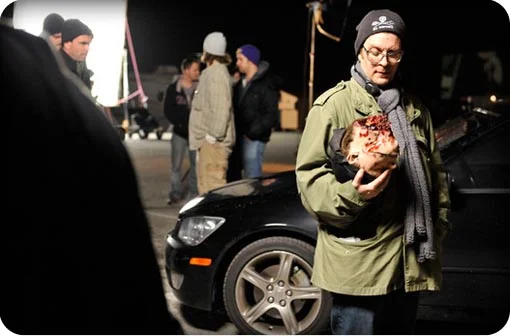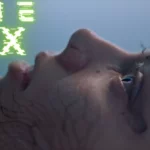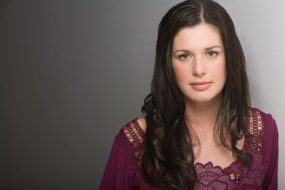
Welcome, Jack. Thank you for joining us.
Jack: My pleasure, Shaun.
B: Let’s go back to where it all began. How did you get into the industry, and who and what films were your inspirations?
Jack: I made “America’s Deadliest Home Video” independently before doing anything in Hollywood. A production company owner in LA saw it, liked it, and hired me to do behind-the-scenes documentaries for big studio productions. That was my first Hollywood gig.
It didn’t pay much, but it was steady, and more importantly, I got to observe veteran directors at work. I was on sets like “Hard Target,” John Woo’s first American film, “Dazed & Confused,” “Carlito’s Way,” “The Flintstones,” and “Grumpy Old Men.” My profile on John Woo caught the attention of Sam Raimi and Rob Tapert, who were producing “Hard Target.” They asked me to direct second unit action sequences on the Hercules movies with Kevin Sorbo, which eventually led to me directing the pilot episode of “Xena: Warrior Princess.”
My inspirations are numerous because my father was a hardcore movie lover and introduced me to all the classics at an early age. I’m a big fan of Robert Aldrich, who did “Kiss Me Deadly,” “The Longest Yard” (1974), “The Dirty Dozen,” and probably my favorite movie of all time, “Vera Cruz” (1954). It’s a super-western with crackling dialogue, beautifully-staged action sequences, and a wicked sense of humor that heavily influenced Leone and Peckinpah. Later, I became a huge Peckinpah fan, especially “Bring Me the Head of Alfredo Garcia,” because it was so damn personal.
B: It seems like you owe a lot to “America’s Deadliest Home Video” for setting your career on its epic path. The projects you’ve worked on are as varied as your inspirations, and you’ve collaborated on some high-profile projects. Was this a way for you to pay your dues and discover who Jack Perez was before your next directorial full features, “The Big Empty” and then the classic “La Cucaracha”?
Jack: Absolutely. Working on all those different projects opened a lot of doors and taught me that the most gratifying work is the truly independent stuff, made outside the studios. Personal projects with actors and crew that you know and love. When I was younger, I naively thought studios would support my specific tastes if they discovered them. But they want to make what they want to make, and if that doesn’t align with what you’re peddling, you’ll spend a lot of time waiting by the phone.
That said, I’ve been lucky to make a variety of movies and TV shows in different genres. But the ones that truly represent me are the ones made completely outside the studios. That’s why my new crime-thriller, “Search & Rescue,” is partly financed through crowdfunding. It’s got a pretty radical and political animal rights message.
Everything I made before “The Big Empty” and “La Cucaracha” shaped me, giving me technical chops and showing me what’s most valuable in the job. After making the Xena pilot, I realized that a studio and paycheck and technical toys weren’t what I was after. Even though I had worked hard to get to that point, I felt detached from it. It didn’t reflect anything going on with me as a 30-year-old.
B: “Just need a fix” – a great quote. Let’s talk about “La Cucaracha.” It’s an epic film, and for us, it was classic Jack Perez on screen. Do you consider it one of your finest? And what a cast!
Jack: Thanks! I was lucky to track down the negative and do an HD transfer for Amazon Prime. It’s definitely one of my personal favorites. It was the first film my writing partner, Jim McManus, and I tried to get made. We almost got it made with William Hurt and Raul Julia, and at one point, Oliver Stone’s company was interested, but it never materialized. We made “The Big Empty” (1997) instead and came back to it in ‘98.
“La Cucaracha” is a prime example of what I love to do: take a genre I love – in this case, the south-of-the-border noir – and merge it with personal, character-based dramatic elements. Eric Roberts gave a great performance, reminiscent of his early work. Joaquim De Almeida, Victor Rivers, and a young Michael Peña were also fantastic. We created a convincing Mexico in Los Angeles, mostly on the Universal backlot, and brought some scale and style to the picture despite having only 18 days to shoot.
B: Moving on from a few other projects like “Wild Things 2,” “Monster Island,” and “666: The Child,” we come to another classic for different reasons, “Mega Shark vs. Giant Octopus.” It caused quite a stir even in the UK. Where did this idea come from, and is it true it’s very different from your “Director’s Cut”?
Jack: I’m proud of “La Cucaracha.” We made the movie we wanted to make. Thank you.
Afterward, it was harder than I thought to get the next movie made. Perhaps because “La Cucaracha” was a blend of genres with black comedy, so it didn’t fit into any specific commercial category. I hadn’t “branded” myself as one type of director.
The first bigger gig came with “Wild Things 2” for Sony. “Monster Island” for MTV was a passion project, drawing from my love of Ray Harryhausen and 50s insect mutation pics like “Them!” My biggest achievement there was getting MTV to finance a movie where stop-motion animation was the main FX technique. I did “666: The Child,” a deliberate “Omen” knock-off, and “Mega Shark vs. Giant Octopus” when I was hurting for money after a couple of personal projects fell through.
I was asked to write “Mega Shark” in two weeks and shoot it in 12 days. I knew it would likely be altered in post, so I took a pseudonym going in. The irony is it became this huge cult thing. It was a Jeopardy question, played theatrically, the whole thing. They recut my version to extend the running time for a specific foreign market, adding pauses to every shot.
It plays awkwardly, like a porno. My cut was fast-paced, as any B-movie should be. One of these days, I’ll release my original version. Only Ed Wood would be okay with the cut as it was released.
B: We look forward to your version. “Mega Shark vs. Giant Octopus” did open the floodgates for the Mega series and other colossal titles within the B-movie industry, including your own epic “Fear Force Five” series.
Let’s talk about your latest project, “Search & Rescue,” which reunites you with Kevin Corrigan from “Some Guy Who Kills People.” What can you tell us about this movie? It seems very personal to you.
Jack: “Mega-Shark” did a lot for me, even though I considered it a mess. It helped me get the meeting for “Some Guy Who Kills People” and facilitated my getting into teaching. I’m grateful. And it enabled me to do “Fear Force Five,” which was my way of correcting some of the mistakes imposed on “Mega-Shark.”
“Search & Rescue” is more personal, with a lot of crazy stuff derived from the world of B. It’s a crime-thriller with a strong animal-rights component. I’m a lifelong animal lover and activist, and instead of doing a doc on the horrors of factory farming, the fur trade, or animal experimentation, I’m putting it all into a badass private eye movie with action, suspense, kink, and gore.
It’s the best way for me to get the message across. My primary cast from “Some Guy Who Kills People” – Kevin Corrigan, Lucy Davis, and Barry Bostwick – are all on board. I’m excited but need crowdfunding to make it happen, as the story is too controversial for any studio to fund.
B: We’re excited for “Search & Rescue” and will support it however we can. Please keep us informed of any developments. Thank you so much for your time and for enriching our lives with so many enjoyable movies. Any final words for the fans?
Jack: Exceptionally kind of you to say. It’s been my pleasure, man! An honor to be featured on your very cool site!
And I definitely want to thank everyone who’s watched and supported my stuff over the years. No matter what the project, from the highly personal to the work-for-hire, I’ve always given it everything I had. So it’s enormously gratifying when people appreciate the work! It means everything!






